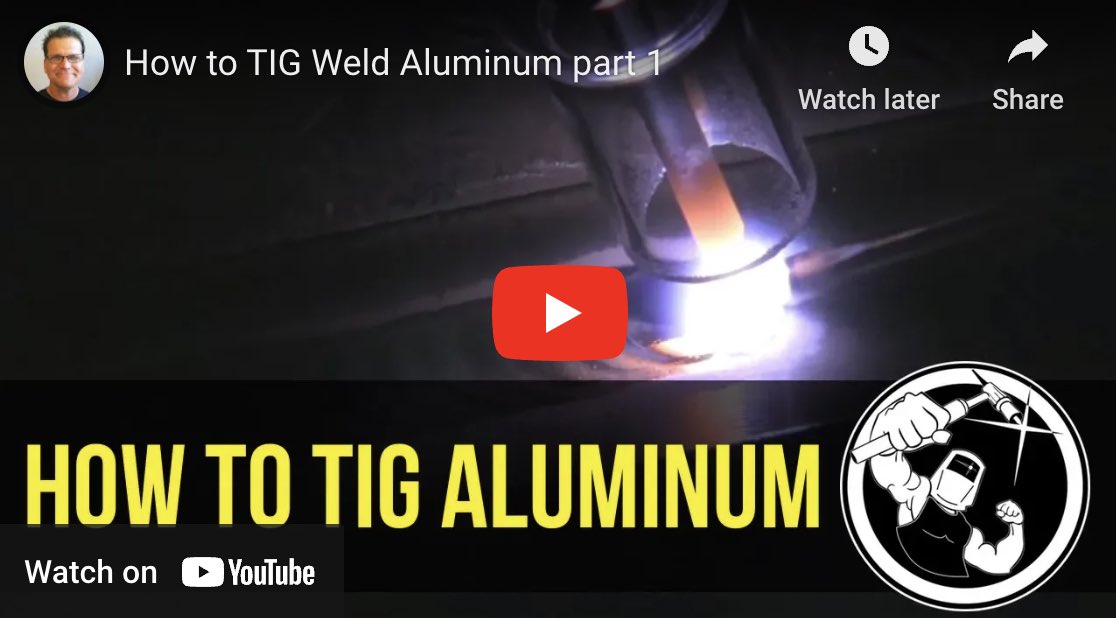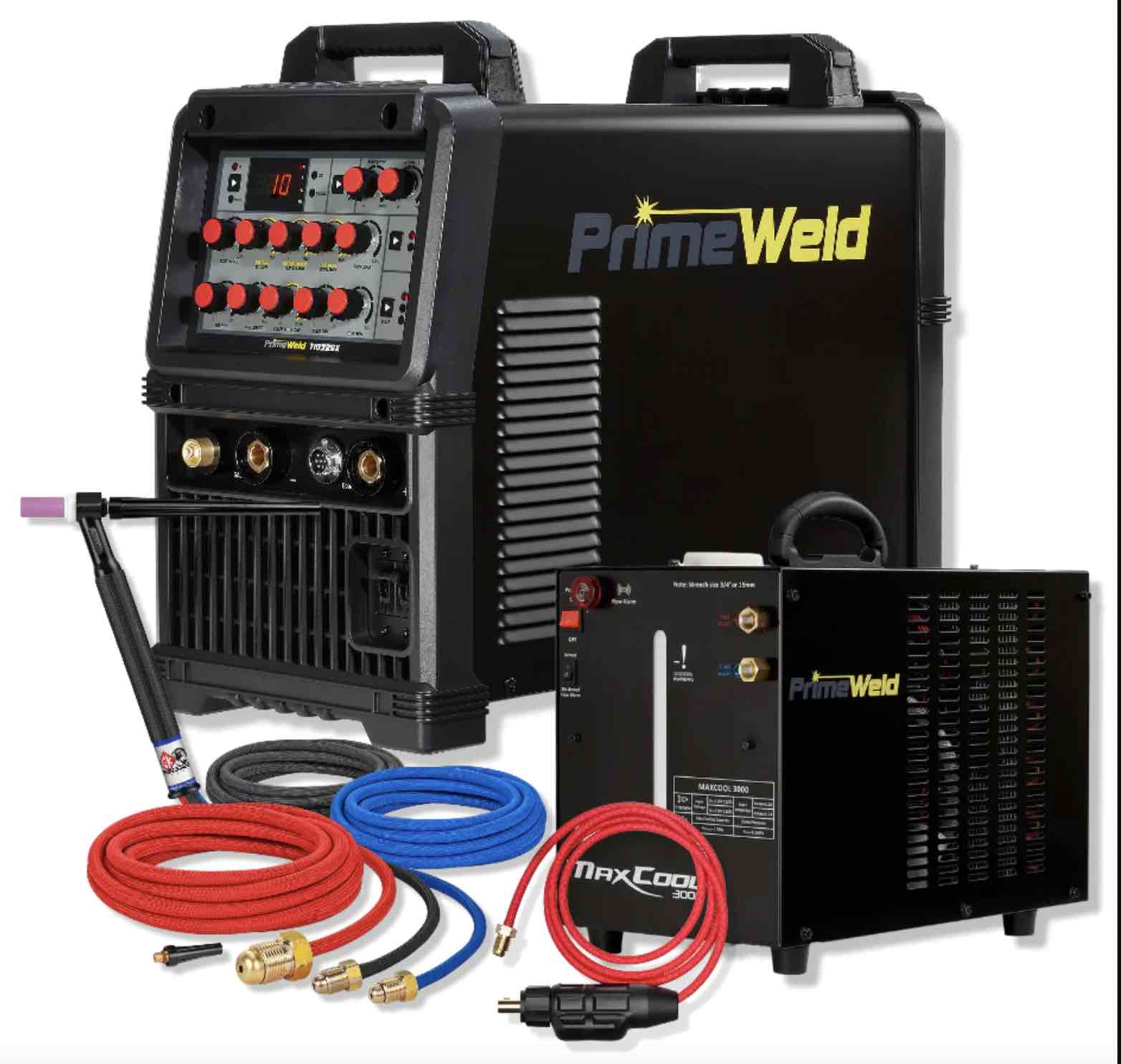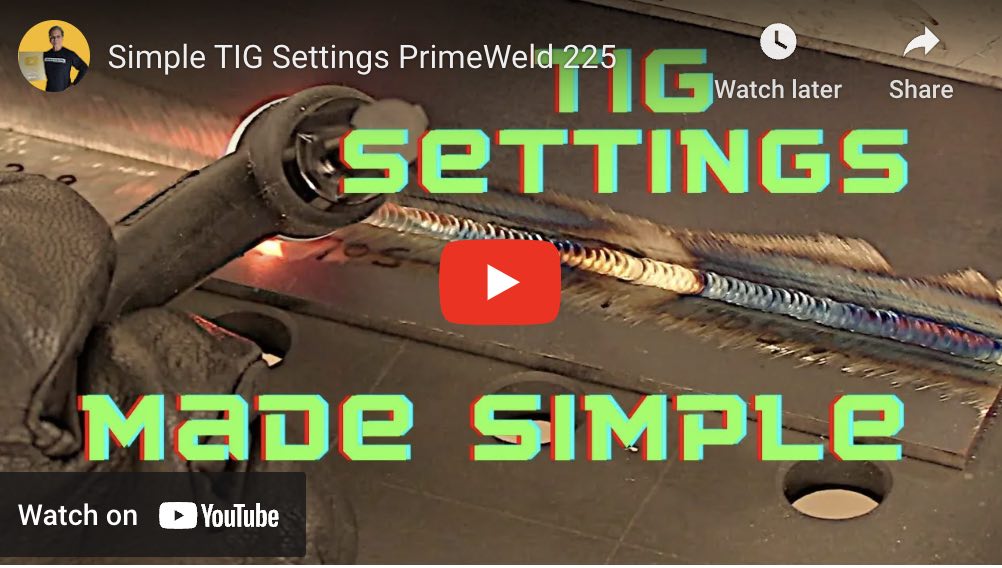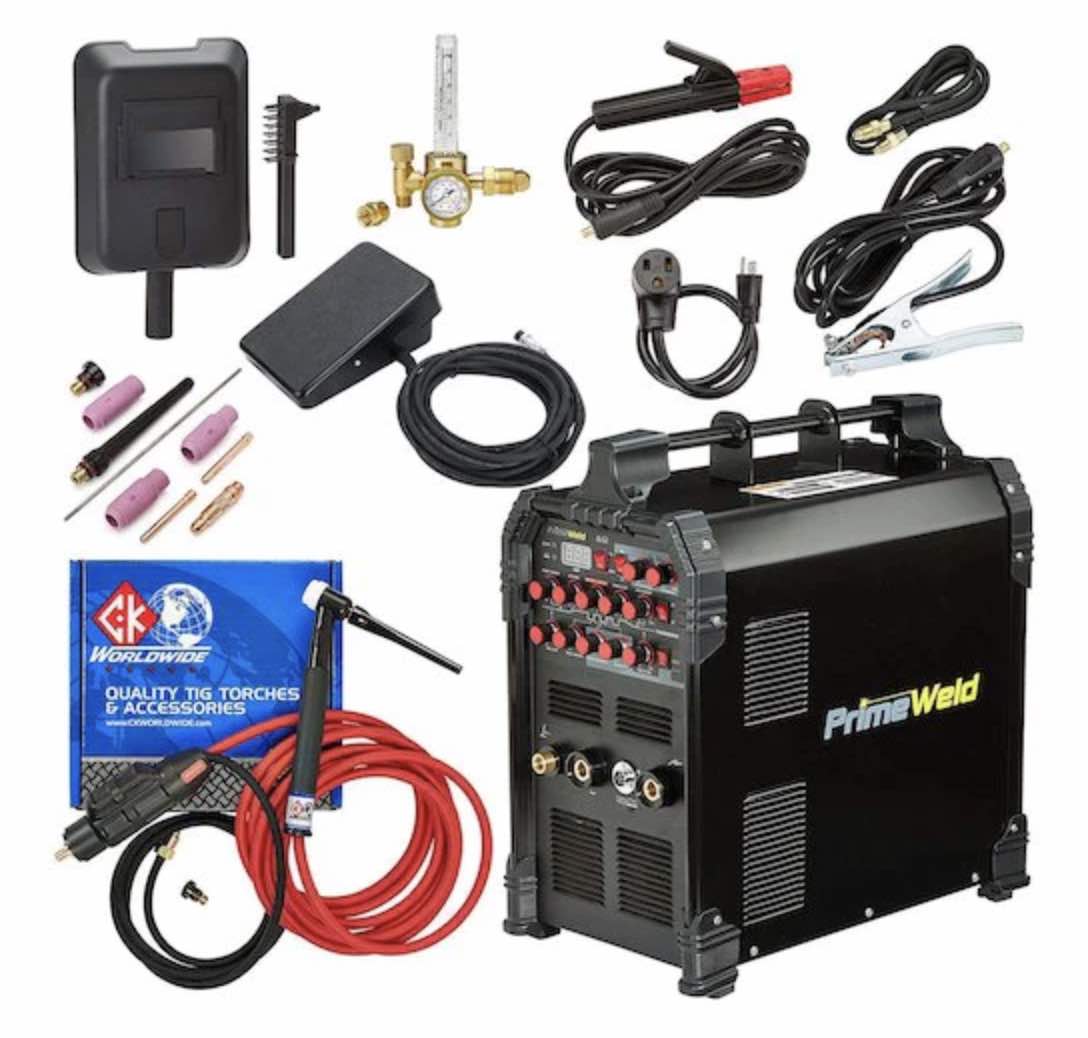How to Weld Aluminum Tubing and get Full even penetration
Scroll down for Short Video on TIG welding aluminum tubing
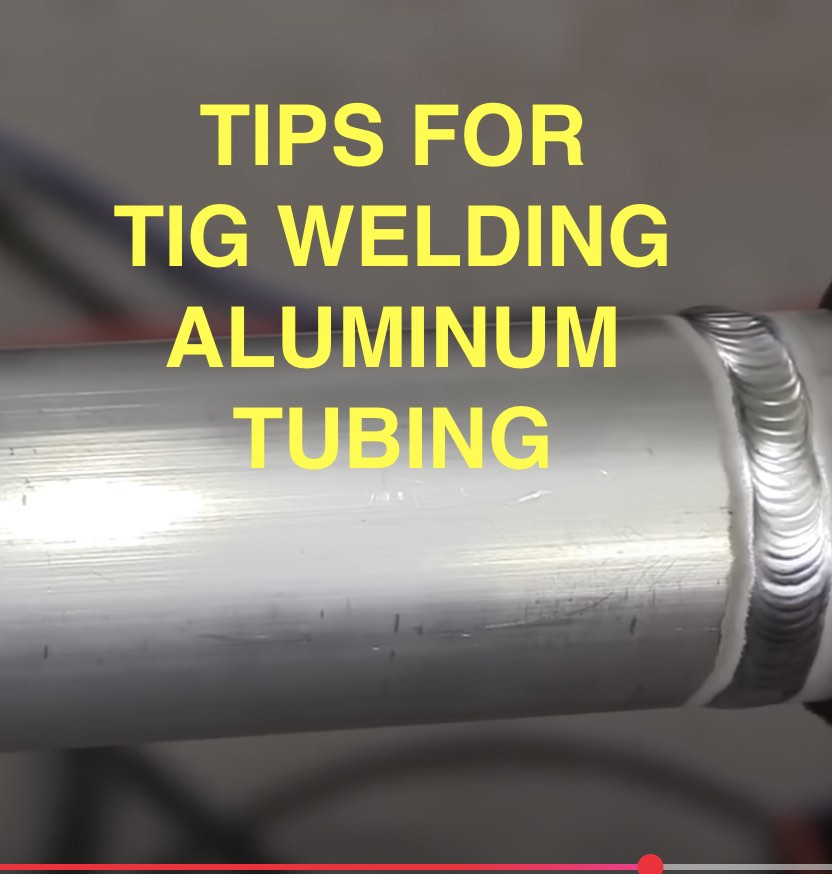
- HOME
- TIG WELDING
- How to Weld Aluminum Tubing
If you are searching for how to weld aluminum tubing, this page should help you a lot.
I used pulse settings in the video above but pulse is not always needed for good results.
- 2 pulses per second, base current 45%, pulse duty 50%
- AC frequency set to 222hz
- AC balance set to 32% cleaning
- 3/32" 2% lanthanated tungsten
- #7 clear furick cup with 20-25 cfh argon flow rate
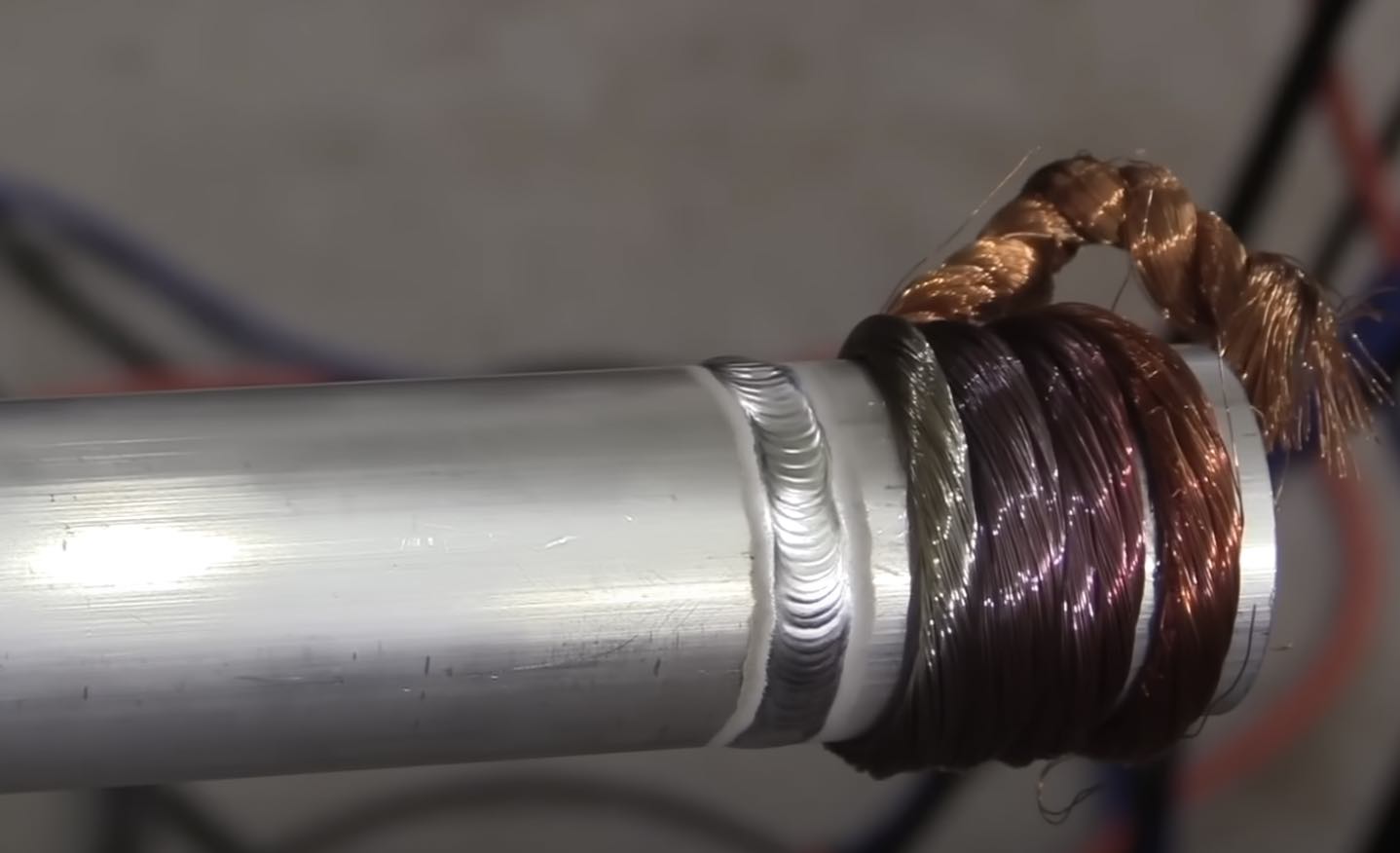
The main tip that made the most difference was the copper braided wire wrapped next to the weld for a heat sink to prevent heat saturation.
If you are new to tig welding aluminum, this video will give you a jump start
TIG Welding Aluminum
Here are some best practices and tips for how to weld aluminum tubing
- make sure to clean the metal and remove any burrs from cutting
- for brand new aluminum that has not been exposed to the elements, this might only require a wipe with acetone.
- if wire brushing is required, use only stainless steel wire brushes that have only been used on aluminum
- aluminum is tig welded using AC current and there are two main settings to adjust on newer inverters....AC balance, and AC frequency.
- Higher AC frequencies can help focus the arc.
- A full penetration butt joint on aluminum tubing requires approximately 1 amp per one thousandths of thickness in order to get full smooth penetration. Travel speed makes a big difference and for faster travel speeds, more amperage might be needed.
- There is a lot of discussion on the best tig cups for aluminum tubing... A lot of welders like to use a #5 standard collet body but there are also plenty of good tig welders who prefer a #6 gas lens. This really depends on the application, joint type, and personal preference.
- The edges of any butt joint should be filed smooth to remove any oxides or contaminants.
Primeweld TIG325x Videos
I like the digital readout feature on the primeweld tig 325x. It makes setting pulse rates easier.
water cooled package shown below with ck 20 torch
Primeweld TIG225x videos on TIG settings
In my opinion, the primeweld 225 is one of the best choices in affordable tig welders.
The problem with most other really affordable tig welders is usually the foot pedal and the torch are just bad and clunky.
Primeweld went to extra expense to include genuine ck torches with superflex hoses along with a smooth SSC style foot pedal.
They also have a responsive primeweld equipment users group on facebook and also have demonstrated great customer support
Watch some primeweld videos and you will see what I mean.



